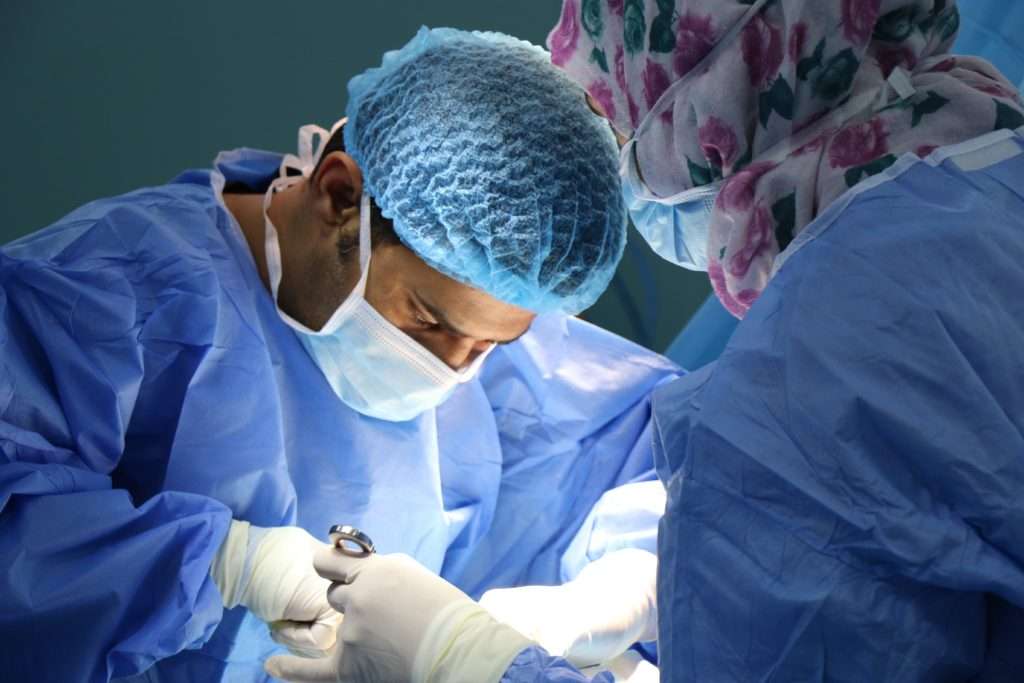Sleep apnea1 is a common condition in the United States. It can occur when the upper airway becomes repeatedly blocked during sleep, reducing or completely stopping airflow. This is known as obstructive sleep apnea. If the brain does not send the signals needed to breathe, the condition may be called central sleep apnea.
Short Sleep Duration varies by Sex, Age, and Race/Ethnicity2
In 2014, short sleep duration (less than 7 hours) was less common among respondents aged ≥65 years (26.3%) compared with other age groups. The age-adjusted prevalence of short sleep duration was higher among Native Hawaiians/Pacific Islanders (46.3%), non-Hispanic blacks (45.8%), multiracial non-Hispanics (44.3%), and American Indians/Alaska Natives (40.4%) compared with non-Hispanic whites (33.4%), Hispanics (34.5%), and Asians (37.5%). Short sleep prevalence did not differ between men and women.
Subscribe to our Newsletter
Healthcare providers use sleep studies to diagnose sleep apnea. They record the number of episodes of slow or stopped breathing and the number of central sleep apnea events detected in an hour. They also determine whether oxygen levels in the blood are lower during these events.
Related Articles
Breathing devices such as continuous positive air pressure (CPAP) machines and lifestyle changes are common sleep apnea treatments. Undiagnosed or untreated sleep apnea can lead to serious complications such as heart attack, glaucoma, diabetes, cancer, and cognitive and behavioral disorders.
Age
Sleep apnea can occur at any age. The risk for sleep apnea increases as you get older. In younger adults, sleep apnea is more common in men than in women, but the difference decreases later in life. Normal age-related changes in how the brain controls breathing during sleep partially explain the increased risk as you get older. Another possible reason is that as we age, more fatty tissue builds up in the neck and the tongue.
Drinking alcohol, smoking, and overweight or obesity can increase your risk for sleep apnea.
- Alcohol can increase relaxation of the muscles in the mouth and throat, closing the upper airway. It can also affect how the brain controls sleep or the muscles involved in breathing.
- Smoking can cause inflammation in the upper airway, affecting breathing, or it can affect how the brain controls sleep or the muscles involved in breathing.
- Unhealthy eating patterns and lack of physical activity can lead to overweight and obesity, which can result in sleep apnea.
Family history and genetics
Researchers have identified family history as a risk factor for sleep apnea, but maintaining a healthy lifestyle can decrease this risk. Studies in twins have shown that sleep apnea can be inherited. Some of the gene related to sleep apnea are associated with the structural development of the face and skull and with how the brain controls sleep and breathing during sleep. Some genes are also associated with obesity and inflammation.
Race or ethnicity

In the United States, sleep apnea is more common among blacks, Hispanics, and Native Americans than among whites.
To screen for sleep apnea or other sleep disorders, your doctor may ask you about common signs and symptoms of this condition, such as how sleepy you feel during the day or when driving, and whether you or your partner has noticed that you snore, stop breathing, or gasp during your sleep. Your doctor may ask questions to assess your risk for developing this condition and take your physical measurements. Your doctor will also want to see whether you have any complications of undiagnosed sleep apnea, such as high blood pressure that is difficult to control. If the screening suggests a sleep breathing disorder, you may get a referral to a sleep specialist to help confirm a diagnosis.
Healthy lifestyle changes to prevent sleep apnea
If you are concerned about having risk factors for developing sleep apnea, ask your doctor to recommend healthy lifestyle changes, including eating a heart-healthy diet, aiming for a healthy weight, quitting smoking, and limiting alcohol intake. Your doctor may recommend that you sleep on your side and adopt healthy sleep habits such as getting the recommended amount of sleep.
- Diagnosis will discuss tests and procedures that your doctor may use to diagnose sleep apnea and rule out other conditions or medicines that may be causing symptoms of sleep apnea.
- Living With will explain what your doctor may recommend to prevent your sleep apnea from recurring, getting worse, or causing complications.
- Research for Your Health will discuss how we are using current research and advancing research to prevent sleep apnea.
- Participate in NHLBI Clinical Trials will explain our ongoing clinical trials that are investigating prevention strategies for sleep apnea.
Signs, Symptoms, and Complications
Common sleep apnea signs and symptoms are snoring or gasping during sleep; reduced or absent breathing, called apnea events; and sleepiness. Undiagnosed or untreated sleep apnea prevents restful sleep and can cause complications that may affect many parts of your body.

Common signs of sleep apnea:
- Reduced or absent breathing, known as apnea events
- Frequent loud snoring
- Gasping for air during sleep
Common symptoms of sleep apnea:
- Excessive daytime sleepiness and fatigue
- Decreases in attention, vigilance, concentration, motor skills, and verbal and visuospatial memory
- Dry mouth or headaches when waking
- Sexual dysfunction or decreased libido
- Waking up often during the night to urinate
Did you know that sleep apnea symptoms may be different for women and children compared with men?
Complications
Sleep apnea may increase your risk of the following disorders:
- Asthma
- Atrial fibrillation
- Cancers, such as pancreatic, renal, and skin cancers
- Chronic kidney disease
- Cognitive and behavioral disorders, such as decreases in attention, vigilance, concentration, motor skills, and verbal and visuospatial memory, as well as dementia in older adults. In children, sleep apnea has been associated with learning disabilities.
- Diseases of the heart and blood vessels, such as atherosclerosis, heart attacks, heart failure, difficult-to-control high blood pressure, and stroke
- Eye disorders, such as glaucoma, dry eye, or keratoconus
- Metabolic disorders, including glucose intolerance and type 2 diabetes
- Pregnancy complications, including gestational diabetes and gestational high blood pressure external link, as well as having a baby with a low birth weight
Did you know that sleep apnea can cause inflammation and lead to complications?

Treatment
If you are diagnosed with sleep apnea, your doctor may make recommendations to help you maintain an open airway during sleep. These could include healthy lifestyle changes or a breathing device such as a positive airway pressure (PAP) machine, mouthpiece, or implant. Talk to your doctor. Depending on the type and severity of your sleep apnea and your needs and preferences, other treatments may be possible.
To help control or treat your sleep apnea, your doctor may recommend that you adopt lifelong healthy lifestyle changes.
- Make heart-healthy eating choices. This also includes limiting your alcohol intake, especially before bedtime.
- Get regular physical activity.
- Aim for a healthy weight. Research has shown that losing weight can reduce sleep apnea in people who were also diagnosed with obesity.
- Develop healthy sleeping habits. Your doctor may recommend general healthy sleep habits, which include getting the recommended amount of sleep based on your age.
- Quit smoking. Visit Smoking and Your Heart and the National Heart, Lung, and Blood Institute’s Your Guide to a Healthy Heart [PDF 2.9MB]. Although these resources focus on heart health, they include basic information about how to quit smoking. For free help and support to quit smoking, call the National Cancer Institute’s Smoking Quitline at 1-877-44U-QUIT (1-877-448-7848).
Mouthpieces
Mouthpieces, or oral appliances, are typically custom-fit devices that you wear while you sleep. There are two types of mouthpieces that work differently to open the upper airway. Some hybrid mouthpieces have features of both types.
- Mandibular repositioning mouthpieces are devices that cover the upper and lower teeth and hold the jaw in a position that prevents it from blocking the upper airway.
- Tongue retaining devices are mouthpieces that hold the tongue in a forward position to prevent it from blocking the upper airway.
Your doctor may prescribe a mouthpiece if you have mild sleep apnea or if your apnea occurs only when you are lying on your back. To get your mouthpiece, your doctor may recommend that you visit a dentist or an orthodontist, a type of dentist who specializes in correcting teeth or jaw problems. These specialists will ensure that the oral appliance is custom fit to your mouth and jaw.

Breathing devices
A breathing device, such as a CPAP machine, is the most commonly recommended treatment for patients with sleep apnea. If your doctor prescribes a CPAP or other breathing device, be sure to continue your doctor-recommended healthy lifestyle changes. Read Living With to learn more about properly caring for your breathing device
Implants can benefit some people with sleep apnea. Some devices treat both obstructive and central sleep apnea. You must have surgery to place an implant in your body. The Food and Drug Administration has approved one implant as a treatment for sleep apnea. The device senses breathing patterns and delivers mild stimulation to certain muscles that open the airways during sleep. More research is needed to determine how effective the implant is in treating central sleep apnea.
A nerve stimulator can also treat sleep apnea. This treatment also involves surgery. A surgeon will insert a stimulator for the hypoglossal nerve, which controls tongue movement. Increasing stimulation of this nerve helps position the tongue to keep the upper airway open.
Therapy for mouth and facial muscles
Children and adults with sleep apnea may benefit from therapy for mouth and facial muscles, known as orofacial therapy. This therapy helps improve tongue positioning and strengthen muscles that control the lips, tongue, soft palate, lateral pharyngeal wall, and face.

Surgical procedures
You may need surgery if you have severe obstructive sleep apnea that does not respond to breathing devices such as a CPAP machine, or that is caused by visible obstruction to the upper airway, perhaps due to large tonsils. Possible surgical procedures include:
- Tonsillectomyexternal link: a surgery to remove the tonsils, which are organs at the back of your throat
- Maxillary or jaw advancement: a surgery to move the upper jaw (maxilla) and lower jaw (mandible) forward, to enlarge the upper airway
- Tracheostomy: a surgery to make a hole through the front of your neck into your trachea, or windpipe. A breathing tube, called a trach tube, is placed through the hole and directly into your windpipe to help you breathe.
If surgery is considered as a possible treatment, talk to your doctor about the different types of surgical procedures, the risks, and benefits of the procedures, potential discomfort, and the recovery time you will need after surgery.
Look For
- Living With will explain what your doctor may recommend, including lifelong lifestyle changes and medical care to prevent your condition from recurring, getting worse, or causing complications.
- Research for Your Health will discuss how we are using current research and advancing research to treat people with sleep apnea.
- Participate in NHLBI Clinical Trials will discuss our ongoing clinical studies that are investigating treatments for sleep apnea.
Jay Harold provides relevant and practical knowledge for your life, your health, and your wealth. ”This post, “Sleep Apnea: 9 Complications & 5 Symptoms” is part of that effort to make you a more knowledgeable healthcare person. Please Share it and read more about Jay Harold here. Please take this advice from Muhammad Ali and give back to others. “Service to others is the rent you pay for your room here on earth.




